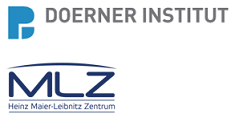Speaker
Description
Paleolithic cave representations are one of the oldest forms of art from modern humans, and as such it is important to understand the coloring matters used, usually black, red or yellow. The study of black Paleolithic coloring matter has been well developed, and analytical procedures have been established [1],[2]. Instead, reds are more complicated, as the coloring matter and the cave wall present a similar chemical composition [3]. Thus, here we study the red coloring matter with two main aims. On the one hand, we want to enhance the red Paleolithic pigments’ characterization with respect to the in situ analyses in a cave that could be undertaken with a portable instrument. On the other hand, we would like to find differentiation criteria between the composition of the walls and that of the coloring matter, which could also help us to improve the performances of in situ analyses.
Red coloring matter from Altamira, La Garma, and several other Paleolithic key cave sites in Northern Spain was analyzed with micro-X-ray fluorescence (μXRF) at the PUMA beamline, SOLEIL synchrotron. Such sensitive non-destructive methods allow us to study trace elements in samples in a way that is not possible in situ as of today (namely with portable XRF, pXRF). A semi-quantitative treatment of the data is being developed. This synchrotron study was further complemented with SEM-EDX analyses, which provide a more detailed information on the surface morphology and chemical composition of the sample, such as the presence of impurities, as well as information on the distribution of elements like iron.
The combination of these two techniques, supported by others, made it possible to find differentiation criteria distinguishing the calcitic cave wall and the coloring matter, as well as to obtain information on the creation of the prehistoric figures. This allowed us to compare the representations between
them, in the same cave but also different caves between them. Finally, we further improved the identification of the elements to be searched for during in situ analyses with a pXRF equipment, such as Ti, Cr, Mn, Cu, Zn, Rb, Sr or Zr.
References :
[1] Trosseau et al. JAAS 2021
[2] Reiche, I. et al submitted Archaeometry 2023
[3] Reiche, I., Tapia, J. et al accepted Archéosciences 2023

